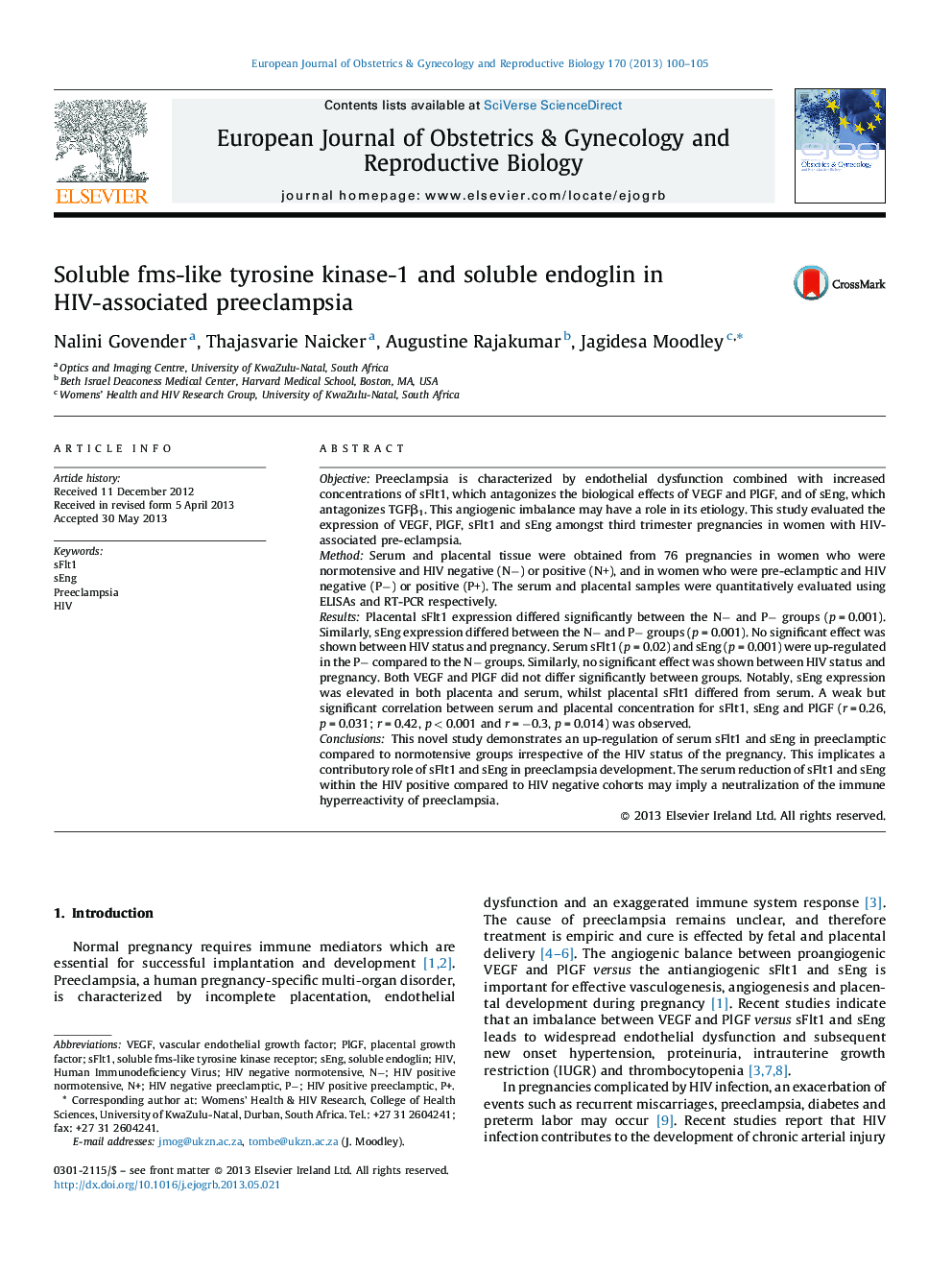| Article ID | Journal | Published Year | Pages | File Type |
|---|---|---|---|---|
| 3919981 | European Journal of Obstetrics & Gynecology and Reproductive Biology | 2013 | 6 Pages |
ObjectivePreeclampsia is characterized by endothelial dysfunction combined with increased concentrations of sFlt1, which antagonizes the biological effects of VEGF and PlGF, and of sEng, which antagonizes TGFβ1. This angiogenic imbalance may have a role in its etiology. This study evaluated the expression of VEGF, PlGF, sFlt1 and sEng amongst third trimester pregnancies in women with HIV-associated pre-eclampsia.MethodSerum and placental tissue were obtained from 76 pregnancies in women who were normotensive and HIV negative (N−) or positive (N+), and in women who were pre-eclamptic and HIV negative (P−) or positive (P+). The serum and placental samples were quantitatively evaluated using ELISAs and RT-PCR respectively.ResultsPlacental sFlt1 expression differed significantly between the N− and P− groups (p = 0.001). Similarly, sEng expression differed between the N− and P− groups (p = 0.001). No significant effect was shown between HIV status and pregnancy. Serum sFlt1 (p = 0.02) and sEng (p = 0.001) were up-regulated in the P− compared to the N− groups. Similarly, no significant effect was shown between HIV status and pregnancy. Both VEGF and PlGF did not differ significantly between groups. Notably, sEng expression was elevated in both placenta and serum, whilst placental sFlt1 differed from serum. A weak but significant correlation between serum and placental concentration for sFlt1, sEng and PlGF (r = 0.26, p = 0.031; r = 0.42, p < 0.001 and r = −0.3, p = 0.014) was observed.ConclusionsThis novel study demonstrates an up-regulation of serum sFlt1 and sEng in preeclamptic compared to normotensive groups irrespective of the HIV status of the pregnancy. This implicates a contributory role of sFlt1 and sEng in preeclampsia development. The serum reduction of sFlt1 and sEng within the HIV positive compared to HIV negative cohorts may imply a neutralization of the immune hyperreactivity of preeclampsia.
